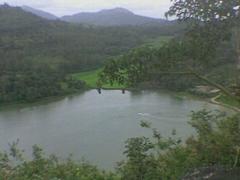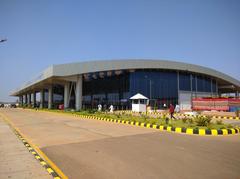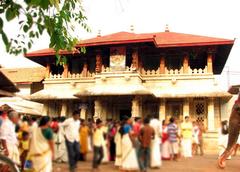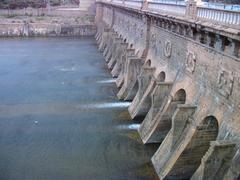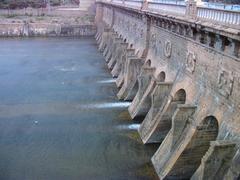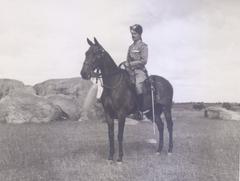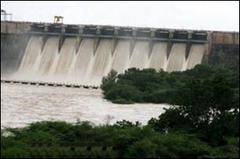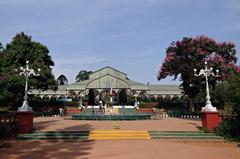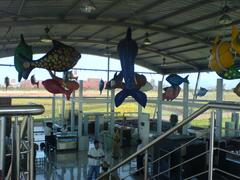Kali Tiger Reserve Visiting Hours, Tickets, and Travel Guide
Date: 14/06/2025
Introduction
Set amid the lush Western Ghats of Karnataka, Kali Tiger Reserve (KTR) is an iconic sanctuary recognized for its exceptional biodiversity and deep cultural roots. Stretching over 1,300 square kilometers, this reserve—formerly the Dandeli-Anshi Tiger Reserve—serves as both a vital conservation stronghold for Bengal tigers and a vibrant hub of indigenous heritage. The reserve’s rich landscapes, traversed by the life-sustaining Kali River, offer visitors a unique blend of wildlife adventure, cultural encounters, and ecological education (Explore Our India).
KTR is a cornerstone of India’s Project Tiger, supporting not only tigers but also leopards, elephants, black panthers, and a remarkable array of birds and reptiles. Its forests, ranging from moist deciduous to evergreen, form part of the UNESCO World Heritage-listed Western Ghats, one of the world’s most critical biodiversity hotspots (Karnataka Tourism).
This comprehensive guide details KTR’s history, conservation milestones, visiting logistics, and the unique experiences it offers. Whether you’re a wildlife lover, eco-traveler, or a cultural explorer, this article equips you with everything needed for a rewarding and responsible visit to one of India’s premier tiger reserves (NTCA).
Historical Evolution
Early Protection and Formation
Established as Dandeli Wildlife Sanctuary in 1956, the area was among Karnataka’s earliest protected landscapes, safeguarding the Western Ghats’ flora and fauna from rapid deforestation and hunting (Explore Our India). The adjoining Anshi National Park was created to bolster these efforts, and the two were later merged for better ecological management. In 2015, the combined sanctuary was renamed Kali Tiger Reserve, highlighting the central role of the Kali River (Karnataka.com).
Conservation Milestones
KTR is integral to Project Tiger, launched in 1973 to arrest the decline of India’s tiger population. The reserve is governed under the Wildlife Protection Act, 1972, and maintains a Tiger Conservation Plan emphasizing habitat integrity, anti-poaching, and ecological corridors (NTCA). Notably, successful prey translocation projects, such as the 2024 release of 40 spotted deer, support healthy predator populations (UPSC Padhai).
Community engagement is pivotal—local Siddis, Gowlis, and Lambanis participate in eco-tourism and conservation, ensuring that both wildlife and traditional livelihoods thrive (IISc ETR125).
Ecological & Cultural Significance
Biodiversity Hotspot
KTR spans a diverse elevation range (400–800 meters), supporting moist deciduous, semi-evergreen, and evergreen forests. This habitat mosaic is home to Bengal tigers, black panthers (the only site in Asia with regular sightings), elephants, gaur, sloth bears, and more than 300 bird species, including hornbills, woodpeckers, and rare raptors (GoDigit). The Kali River’s ecosystem nurtures a host of reptiles and amphibians, such as the king cobra and Indian python (Springer Biologia).
Unique flora, including several threatened and endemic plant species, underpin the reserve’s role in regulating water, preventing soil erosion, and acting as a carbon sink (IISc ETR125).
Cultural Heritage
Indigenous communities have stewarded this land for generations, maintaining sacred groves and honoring the Kali River in local festivals. These traditions enrich conservation, blending ecological knowledge with spiritual reverence. Community-based tourism and eco-development initiatives enable residents to participate in and benefit from KTR’s protection (Karnataka Tourism).
Visiting Hours and Tickets
- Entry Hours: 6:00 AM to 6:00 PM daily.
- Safari Timings: Early morning (6:00 AM–10:00 AM) and late afternoon (3:00 PM–6:00 PM) for optimal wildlife viewing.
- Tickets:
- Indian adults: INR 150; Foreign nationals: INR 300.
- Safari fees start at INR 1,000 per jeep (subject to variation by season and group size).
- Discounts for children and senior citizens.
- Booking: Tickets and permits are available online (Kali Tiger Reserve Official Website) or at entry gates. Advance booking is strongly recommended during the October–May peak season.
How to Reach Kali Tiger Reserve
- By Air: Nearest airports—Dabolim, Goa (~90 km); Belgaum (~90 km).
- By Rail: Dandeli (closest station), Alnavar (35 km from Dandeli).
- By Road: Dandeli town is well-connected to Bangalore, Hubli, and Belgaum by regular bus and taxi services.
Travel Tips: Bring light, neutral clothing, sturdy shoes, rain gear (monsoon), insect repellent, binoculars, and a camera. Mobile connectivity can be intermittent inside the reserve.
Major Attractions
- Dandeli Wildlife Sanctuary & Anshi National Park: Together form the core of KTR’s protected area (kalitigerreserve.org).
- Kali River: Offers coracle rides, kayaking, and scenic riverbank walks (hellotravel.com).
- Kavala Caves: Ancient limestone caves with a naturally formed Shivalinga, accessible via guided tours (kalitigerreserve.org).
- Syntheri Rocks: Impressive monolithic granite outcrop and birdwatching hotspot (kalitigerreserve.org).
Activities for Visitors
- Jungle Safaris: Guided jeep safaris cover core wildlife zones.
- Bird Watching: Over 300 species, guided by expert naturalists.
- Nature Walks: Educational treks through forests and along riverbanks.
- River Activities: Coracle rides and kayaking on the Kali River.
- Caving & Rock Exploration: Guided visits to Kavala Caves and Syntheri Rocks.
Accommodation
Eco-friendly resorts, forest guesthouses, and homestays in and around Dandeli cater to a range of budgets. Forest department lodges offer immersive experiences, often with guided tours included (kalitigerreserve.org).
Responsible Tourism & Safety Guidelines
- Carry valid ID, water, and personal medication.
- Remain silent and avoid flash photography.
- Stay with guides and on marked trails.
- Do not feed or disturb wildlife.
- Respect local customs and support community-led tourism.
- Follow all reserve rules to preserve the ecosystem (indiaenvironmentportal.org.in).
Conservation Challenges
Key Threats
- Habitat Fragmentation: Infrastructure and encroachment reduce core wildlife zones.
- Human-Wildlife Conflict: Incidents with elephants and predators near villages.
- Tourism Pressure: Unregulated activities threaten sensitive habitats.
- Climate Change: Alters rainfall, causing seasonal water shortages.
- Invasive Species: Plants like lantana degrade native forests.
- Poaching: Ongoing risk requiring stringent monitoring (Springer Biologia).
Community Involvement
Local Eco Development Committees (EDCs) empower communities to participate in tourism management, anti-poaching, and environmental education. Inclusive approaches ensure that conservation and livelihoods progress hand-in-hand (IISc ETR125).
Frequently Asked Questions
Q: What are the Kali Tiger Reserve visiting hours?
A: 6:00 AM to 6:00 PM daily.
Q: How do I book tickets?
A: Online via the official website or at entry points.
Q: What activities are available?
A: Jeep safaris, birdwatching, nature walks, river rides, and cave tours.
Q: Is the reserve accessible for differently-abled visitors?
A: Some areas are accessible, but activities like trekking and caving may not be suitable.
Q: What should I bring?
A: Valid ID, neutral clothing, sturdy shoes, rain gear (monsoon), binoculars, camera, medication.
Contact & Booking
For official information, tickets, and guided tours:
- Kali Tiger Reserve Official Website
- Phone: +91 82842-95973 / +91 82842-31585
- Email: [email protected]
Advance booking is recommended, especially in peak season.
Summary & Final Tips
Kali Tiger Reserve represents the harmonious intersection of wildlife conservation, cultural preservation, and responsible tourism. Its diverse habitats, rich fauna and flora, and vibrant cultural traditions make it a must-visit for anyone seeking a holistic nature experience in the Western Ghats. Adhering to visiting hours, booking tickets in advance, and respecting reserve guidelines ensures a safe and impactful visit. Whether exploring ancient caves, embarking on a safari, or engaging with local communities, KTR promises adventure, learning, and inspiration (Explore Our India; Karnataka Tourism; NTCA).
References
- Explore Our India – Kali Tiger Reserve
- Karnataka Tourism – Kali Tiger Reserve
- Kali Tiger Reserve Official Website
- NTCA – Tiger Reserves
- IISc ETR125 – Biodiversity and Conservation
- UPSC Padhai – Spotted Deer Translocation
- Springer Biologia – Human Impact Study
- India Environment Portal – Ecotourism Guidelines
- GoDigit – Tiger Reserves in Karnataka
- Hellotravel – Kali Tiger Reserve
- Karnataka.com – Kali Tiger Reserve
- TheTigerSafari – Kali Tiger Reserve









